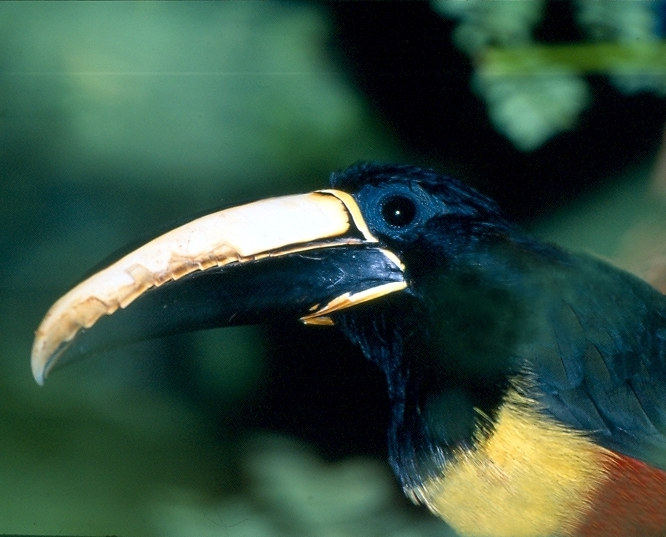
Black-necked aracaris have a black head and throat with dark green to almost black back and tail. Its undersides are yellow with a red band and rump.

Black-necked aracaris have a black head and throat with dark green to almost black back and tail. Its undersides are yellow with a red band and rump.
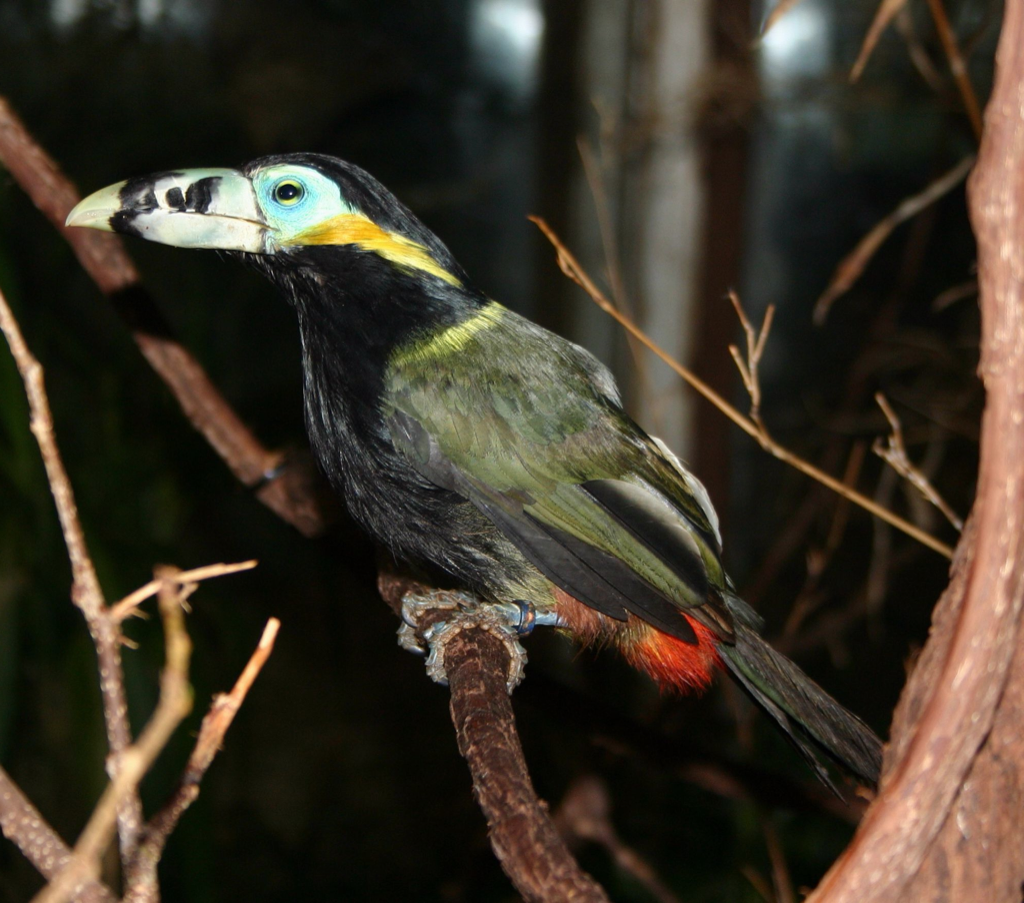
The head of the male is black except for the bluish-green bare skin around the eyes and the yellow ear-tufts. The upperparts and tail are olive-green. The bill is ivory with black vertical stripes, large spots and a yellowish tip. Females are similar but the head is chestnut and the underparts are a rufous color.

This toucanet is easily identified by its saffron yellow head and breast, olive mantle and red rump. Sexes are similar but the female is duller (somewhat more olive in color) and the bill is shorter. The greenish-horn bill has red patches surrounded by yellowish-gray at the base. The rump and ocular skin are red. The iris is pale yellowish.
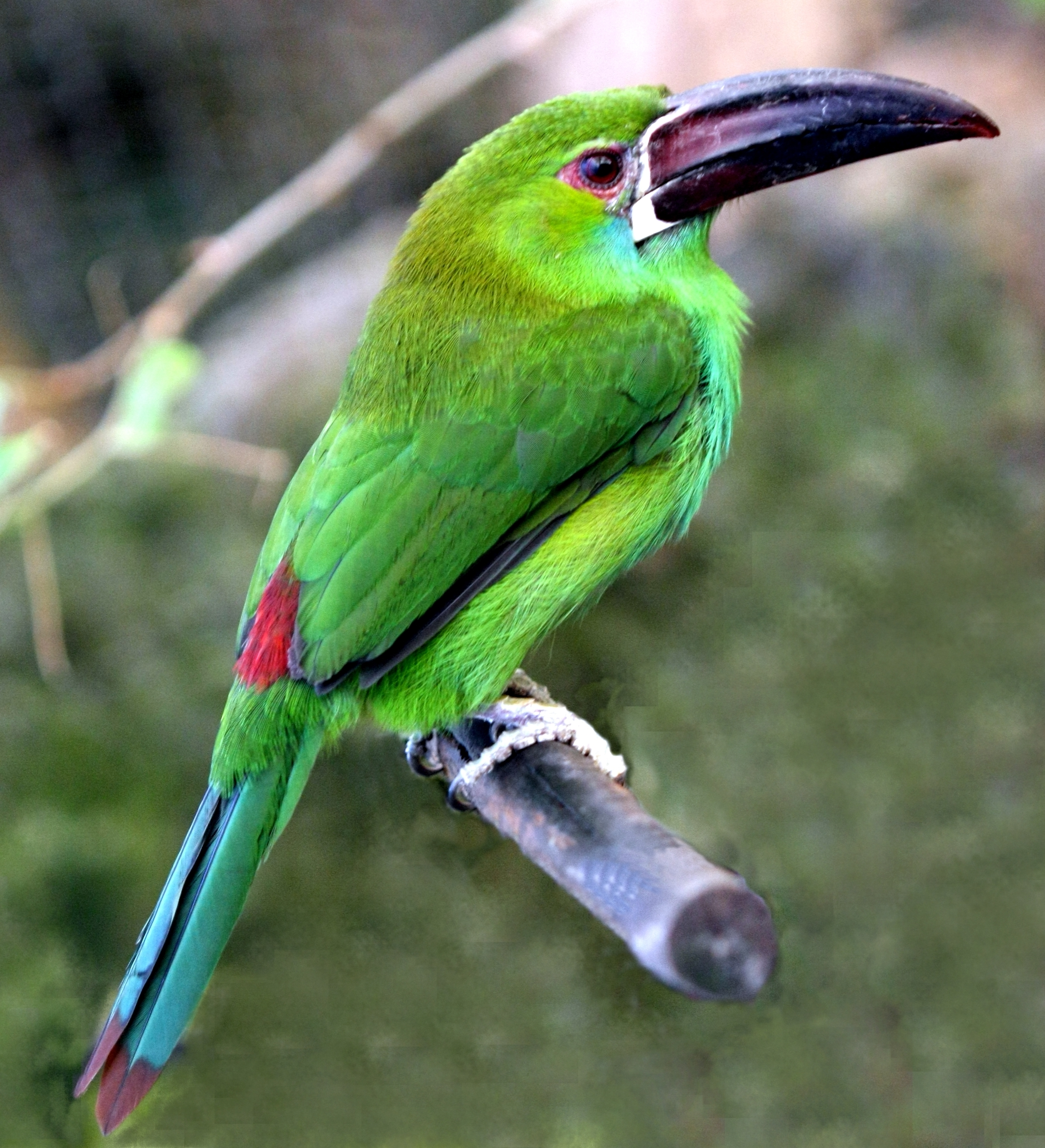
Crimson-rumped toucanets are mostly green in color and, as the name implies, have a red rump. They are somewhat darker and have a bronze tint above. The blue-green tail has some reddish-brown tips. The patch at the base of the mandible, area around the eyes and broad band across the breast are blue. The long, curved beak is reddish-brown and black, with a vertical white stripe at the base. Eye skin is brown and the iris is dark.

As the name implies, Chestnut-eared aracaris have a chestnut coloring around the throat and ears. The head is black and the back and tail dark green to almost black. Their undersides are yellow with a red band and rump. Their dark brown hooked beaks have a yellow-orange stripe along the bottom of the upper mandible. The serrated edge of the upper mandible is prominent. The whitish eyes are surrounded by grayish-blue facial skin. The feet and legs are yellowish-green. Sexes are somewhat similar but the female has more brown on the head, shorter bill and the black area on lower throat is not as wide.
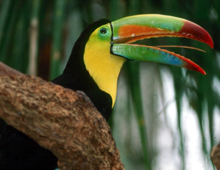
Also known as the Rainbow-billed or Sulfur-breasted toucan, it is popular for its resemblance to “Toucan Sam™”, the “Froot Loops®” mascot. The northernmost of the large toucans, it ranges from the Mexican state of San Louis Potosi south to Colombia and Venezuela. Much habitat has been lost to agriculture. Though first hatched in captivity at the Houston Zoo, in 1974, it has not bred consistently in collections. The DWA is involved in a captive breeding consortium for this species involving both private collections and public zoos.
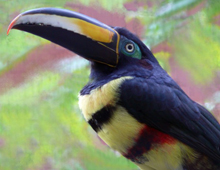
Compared to some other toucans, this species has a rather limited range in the north-western corner of South America, found in parts of Venezuela, Colombia, Ecuador, Peru and Brazil. It has never been common in zoos and was not bred in captivity until 2009, at the DWA, where specimens were received through the cooperation of the Venezuelan organizations PROFAUNA and FUNZPA. While it may appear bewilderingly similar to other aracaris, the two complete black bands across its chest distinguish it from any other toucan.

Named for the pattern on its beak, the Lettered aracari has a larger South American range than its close relative, the Green aracari, but is much rarer in captivity. The first breedings outside of South America did not take place until 2010, when both the DWA and a private collection in California were successful. As with the Green aracari, males have black heads and females have brown heads.
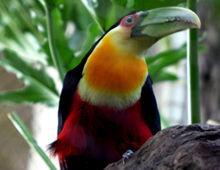
Found in Brazil, Paraguay and Argentina, this species remains fairly common despite continuing habitat loss and some hunting pressure (toucans are eaten by people in some places). Though presently rare in collections, it was the first of the Ramphastos toucans bred in captivity, in Germany in 1967. It has also set the age record for any member of its family, one having lived 27 years, and another possibly 32 years. The DWA specimens arrived through the cooperation of the Brazilian Federal wildlife agency, IBAMA.
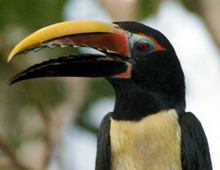
Before the 1980s, this small toucan from Northeastern South America was very rare in captivity. Since the first captive breeding took place in 1980, in a California private aviary, hundreds have been hatched in the US, and the captive population appears to be self-sustaining. Those in zoos are carefully monitored for genetic diversity through a Species Survival Plan (SSP) of the Association of Zoos and Aquariums (AZA), and many others are kept privately. Since 2001, more than 50 have hatched at the DWA. This is one of the few toucans whose sexes can be easily distinguished; males have black heads and the females have brown heads.